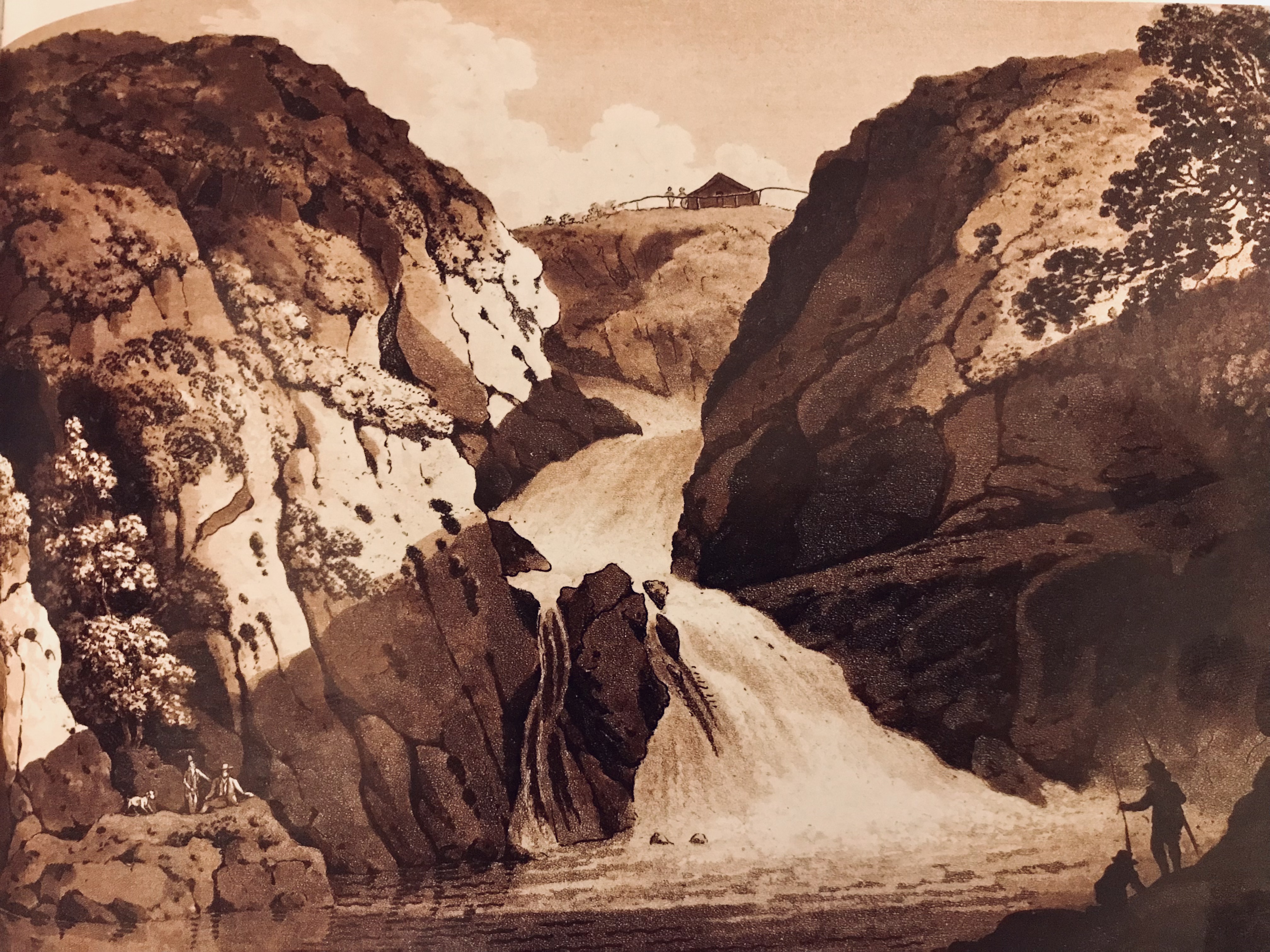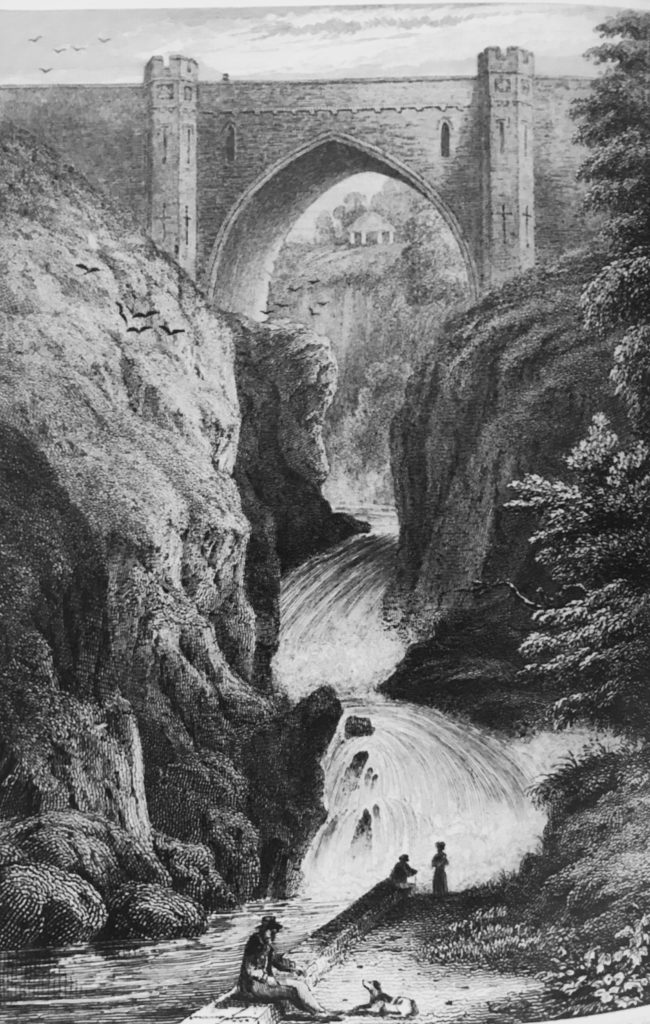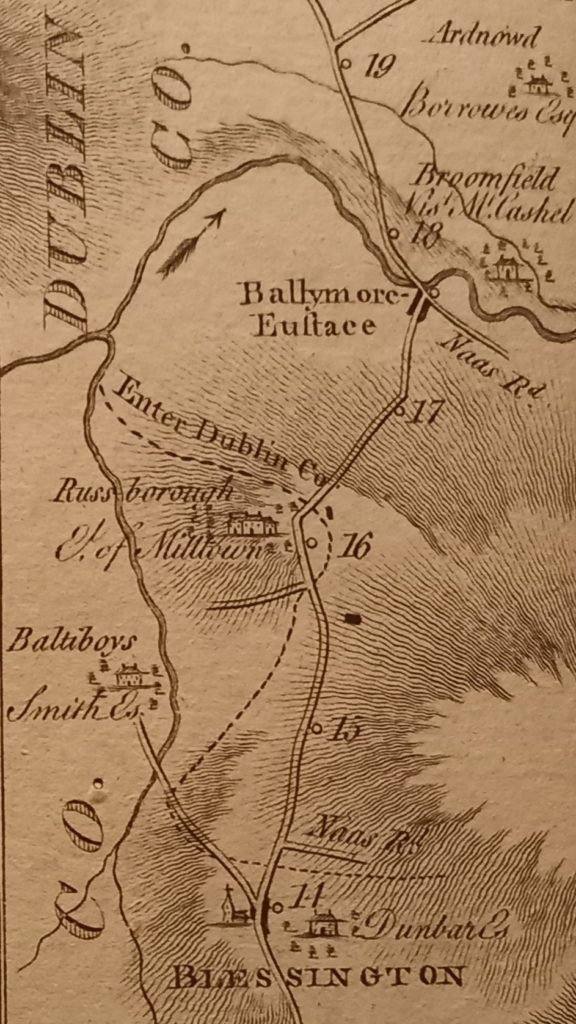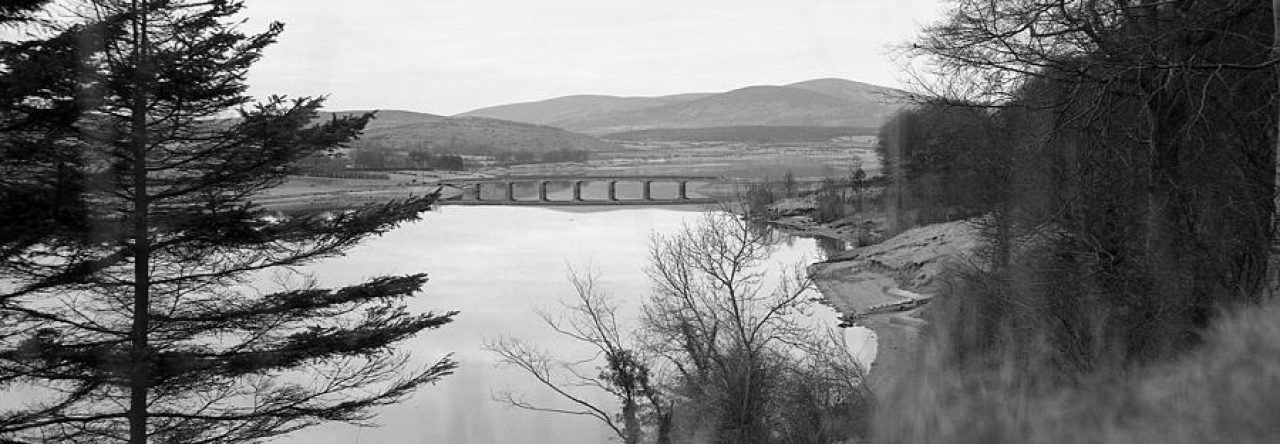In the 1820’s Alexander Nimmo drew up plans for the construction of 2 bridges at Poulaphouca. The first bridge to be over the River Liffey; the bridge further on over a former bed of the Liffey. The cost of the undertaking was to be £4,074. The Dublin Grand Jury were to contribute £1,947 and Wicklow Grand Jury £1,063 The Lord Lieutenant picked up the rest. At that time the County of Dublin extended to Naas, Ballymore and as far as the Falls. Commissioners for the work included Lord Downshire, The Earl of Milltown, Richard Hornidge of Tulfarris and John Hornidge of Russelstown. It would be a single span bridge, with a decorated arch. It would have four castellated parapets at both ends forming crenellated refuges. It was completed by the year 1827. Up until this time traffic from Blessington to the South-East went through Kilmalum and past the back of Russborough, on to Ballymore Eustace and across the Liffey there. Upstream from Poulaphouca had been the Horse Pass Bridge, but as the name suggests this could cater only for a single horse. Across it went people on foot, horses carrying packs of wool and assorted goods. Single file animals as well. It was eventually swept away by a flood and is now under water.
Of what advantage was this new bridge and the new roads on either side? Well they brought the Falls at Poulaphouca into easy reach. The coach road from Blessington to Baltinglass was more direct and straighter. Grand Juries made great efforts with road improvements. Land owners on the route, people like the Earl of Milltown, would have welcomed the new development and would have had the influence to make it happen. Milltown owned the land on the north side of the Falls and he would create a tourist venue there, building a café and ballroom at the site. From the other side of the river steps were built right down to the bottom of the cascade just beside the Devil’s Cauldron. The spray would cool you off in fine weather. In times of flood the noise and power of the falling water was thrilling. People would have outings to this natural wonder. Still on the South Side facilities for visitors were made, the present Hotel being constructed in the late 1800’s. Very attractive gardens were developed around it. I remember in the 1960’s sometimes calling into the Hotel on my way back from Donard to Blessington. The faded though still beautiful shrubbery, ornamental trees, gazebos and walks were still there. Guests could have afternoon tea there. All very gracious! Joe Burke and his sisters now managed things, but since the damming of the river and the virtual ending of the waterfall, business had come to a sudden halt and the premises had gone slowly into decline. The present owners are making great efforts to reclaim the glamour of the past. Will we ever see the majestic Falls in full flow again. Perhaps the E.S.B. could open the floodgates on a designated few Sundays per year. The problem would be to get some Insurance Company to cover probable outlandish claims for compensation after some trivial mishap. I remember seeing the water being released for a few hours some years ago – a wonderful sensation. Whenever the Liffey was flash-flooded the experience of witnessing it must have been truly awesome. Visitors to West Wicklow would want to see this wonder of nature in all its mighty grandeur.
In the year 1881 Anna Parnell, President of the Ladies’ Land League visited these romantic Falls. She was first honoured by Patrick Driver at Ballymore Eustace on behalf of the Ballymore branch of the Land League. A triumphal Arch spanned the street where a large crowd had gathered. Her carriage was then drawn by the menfolk as far as Poulaphouca. In the ballroom there she was honoured by members of the Ladies’ Land League from Dunlavin and Hollywood. The arrest of Michael Davitt was condemned. Her brother, of course, was Charles Stewart Parnell Ireland’s Uncrowned King.
The drowning of the Kildare hounds.
Well before the bridge was built the Kildare Hunt had one of their outings to West Wicklow. At Troopers’ Field they rose a mountain fox which headed towards Poulaphouca. His den, unfortunately for him, was on the other side of the Falls. The hounds were now very close on his brush. He was cornered and had no alternative but to try jumping across the chasm. He failed and was swept down the fall. He was followed by 12 couple and a half of the leading hounds. (Another example of a contrary imperialistic way of computing. Why not just say 25? ) Soon all were in a melee, fox and hounds in the foaming eddies under the fall. Most were killed, others maimed – a few making their way on land. When Jack Grennan the huntsman saw the debacle he stood statue-like for a few minutes, then burst into tears. He wept long and bitterly.
A Warning to Children
Come children all and list awhile
To the tale of a Pooka most terribly vile.
He lives at the bottom of a cauldron deep
Below Poulaphouca’s steps so steep.
He comes out most at midnight.
To give late revellers a fright.
On their way home from a friendly inn.
Sure to take a few pints it is no sin.
The most spiteful sprite of the underworld.
He can stop your hens from laying.
He can stop your cows from milking.
What a miserable scoundrel he surely is.
His head is somewhat like that of a horse.
He has horns just like the devil.
His claws are long and sharp and slimy.
His teeth like those of the crocodile.
Go not near the Devil’s Cauldron
In case he might misread his clock.
Then leap from his dungeon in the deep.
And appear before you. What a shock!

Note the viewing point and ballroom over the cataract. These were on the Russborough side, now inaccessible due to the E.S.B. power station.

Again note the ballroom on the Milltown side and the people enjoying their day out.

See the Dunbar name beside that of Blessington.
The Dunbars were among the previous owners of Blessington House and estate before the Downshires, Wills Hill being made first Marquis of Downshire in the year 1789. Being on the main highway to the south-east Ballymore had been a busy town, but with the building of bridges at Poulaphouca and not long afterwards at Kilcullen it lost most of its passing trade and went into decline. Note the importance placed on Baltiboys House. A factor could have been if old John Smith had purchased a copy of the Taylor & Skinner maps. Blessington is 14 Irish miles from Dame St., Dublin.
Any comments or feedback would be welcome: To contact Jim Corley please click here.


Leave a Reply